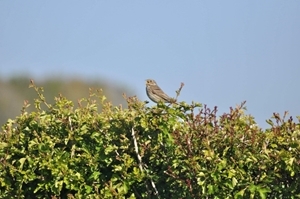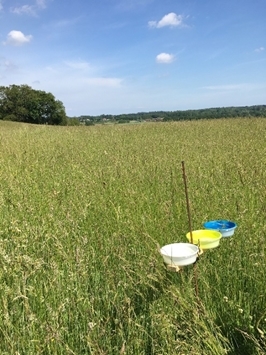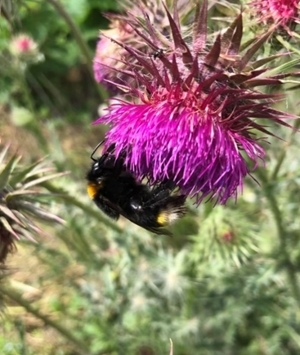Written by Ellie Ness, FEU Research Assistant
3-minute read

This summer is the first season of fieldwork for the Framework project. The project has helped support the setup of 11 Farmer Clusters across various European countries and is looking at the impact of landscape-scale management on farmland wildlife over a five-year period.
 One of these clusters is the Cranborne Chase Farmer Cluster in Dorset, and the GWCT is undertaking some of the wildlife monitoring on this cluster. This involves a range of surveying, including breeding bird surveys, pollinator and butterfly surveys, and the setting of pollinator pan traps to monitor solitary bees and natural enemy invertebrates. There will also be arable plant monitoring that the cluster facilitator will carry out and, as part of the Owl Box Initiative, we are checking barn owl nest boxes across the cluster to monitor their breeding success and see where the adults are hunting.
One of these clusters is the Cranborne Chase Farmer Cluster in Dorset, and the GWCT is undertaking some of the wildlife monitoring on this cluster. This involves a range of surveying, including breeding bird surveys, pollinator and butterfly surveys, and the setting of pollinator pan traps to monitor solitary bees and natural enemy invertebrates. There will also be arable plant monitoring that the cluster facilitator will carry out and, as part of the Owl Box Initiative, we are checking barn owl nest boxes across the cluster to monitor their breeding success and see where the adults are hunting.
Fieldwork has been going really well so far, and we still have a while to go yet, with August pollinator surveys and more barn owl boxes to check. As it’s the first year of the project, there has also been a lot of planning and organising to prepare for the fieldwork, so as a team we’ve been very busy the last few months!
This year is a baseline to compare future years to. Each year we will carry out the same monitoring, and hopefully see some changes over the course of the five years as more habitat features are put in and management changes. It’s been great to see the range of wildlife already on the farms, though; the surveys have monitored a whole range of bird and insect species using the farmland habitats already.
I was especially excited on my first bird survey to hear a singing corn bunting, and then I heard another one, and another one, and quickly realised they are everywhere across the cluster! Across the country, corn buntings have suffered large declines, so it’s great to see such a strong population across this cluster, which hopefully will be built on in future years with support from the farmers. It’s been a pleasure to carry out the surveys, I’ve been able to watch displaying lapwings, hear long-eared owl chicks squeaking in the woods, and see a white-tailed eagle flying low over arable fields. There’s hares running all over the place, skylarks singing away, grey partridge pairs scurrying up field margins, bees and butterflies everywhere; it’s a lovely example of British farmland.


Left: A pollinator pan trap in situ (Photo credit: Inca Johnson).
Right: Southern cuckoo bee (Bombus vestalis) seen on a pollinator survey.
It’s been great working with the farmers and landowners across the cluster. Many are really interested in the work, and some are already making plans for future scheme agreements to try to improve habitat connectivity across the cluster to benefit a whole range of species. The next few years will be really interesting to see the project develop and how the wildlife responds to all the good work carried out by the farmers.